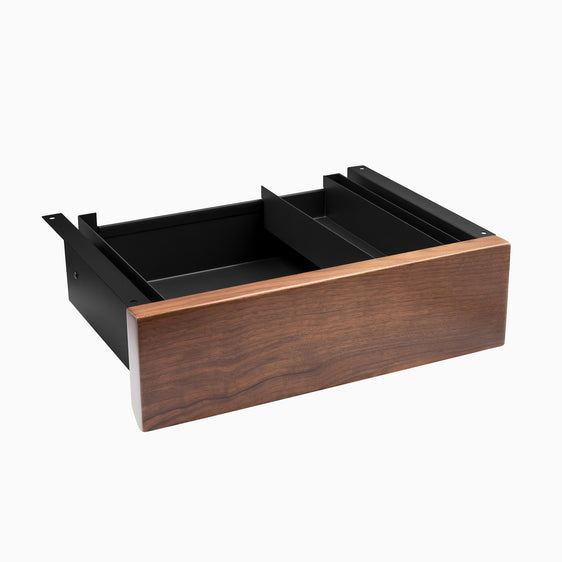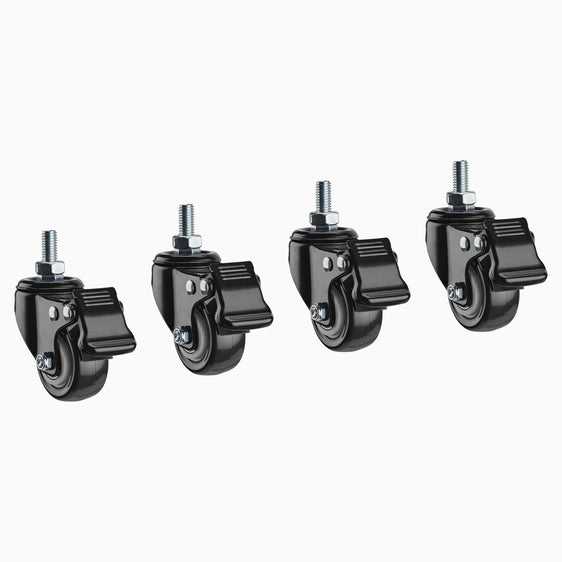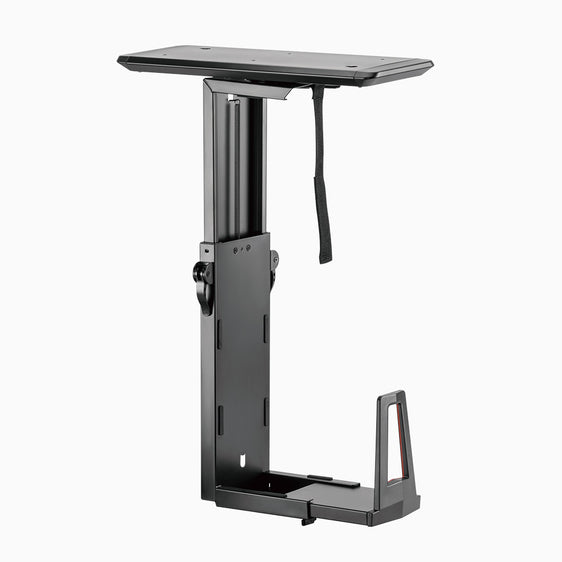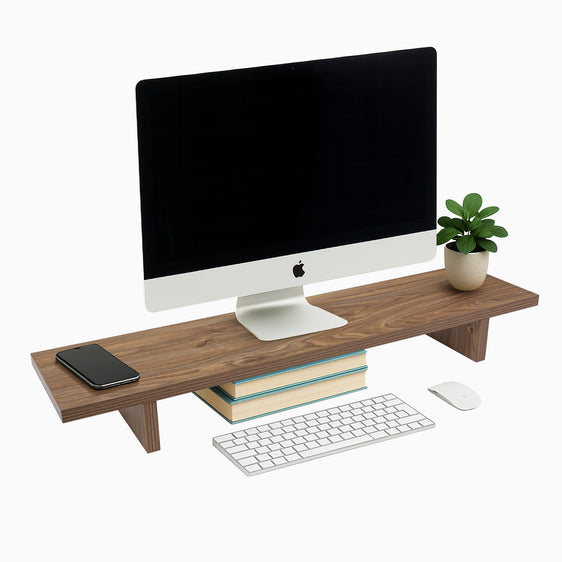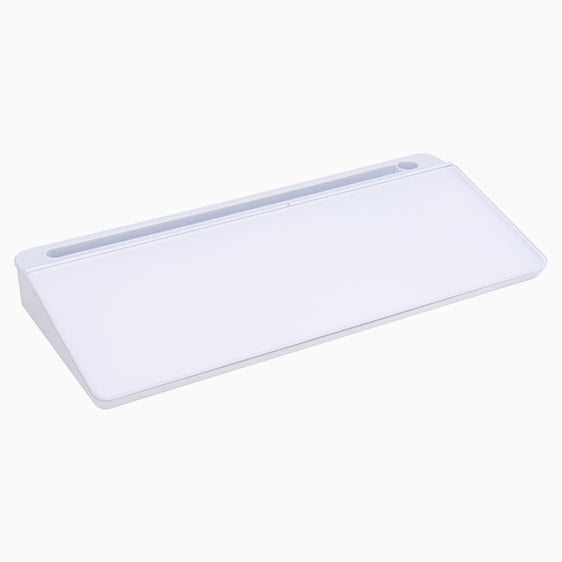
News
Transforming Workspaces: 12 Modern Office Design Concepts For 2023
Hayden AdamsThe modern office design movement prioritizes the needs and desires of today's workforce. Instead of the traditional 9-5 work environment that felt restrictive and imposed, employees now crave a modern workspace, that is inviting and feels more human, and homelier. The days of cramped office spaces with flickering fluorescent lights and dull-coloured walls are long gone.
Modern office layouts are characterized by open, bright spaces that are infused with splashes of colour, fostering creativity and boosting morale. Whether you are intrigued by the benefits of a modern, office design ideas or simply looking to revitalize your own mundane office space, we have some inspiring modern office ideas to spice up your desk.
The Benefits of Good Interior Office Design
Modern office design concepts play a pivotal role in enhancing your company's success. A stimulating workplace that nurtures creativity and productivity improves employee morale and well-being. It also enables you to attract top talent, even in a competitive job market, and reduces employee turnover rates. Renovating and redesigning your office space may present challenges, but the thought put into it can yield remarkable results.
A well-thought-out office interior design concept can significantly impact your company's bottom line, boosting its overall performance. Incorporating modern work spaces and modern office design ideas can create a more functional and visually appealing environment that supports productivity and employee satisfaction. Additionally, modern space concepts can enhance your company's brand and values, as the office design often reflects the nature of your business. It is not just your employees who visit your company; clients, partners, and associates also frequent your workplace. With new office concepts, it is crucial to have a design that reinforces your company's image and uniqueness, leaving a lasting impression on everyone who enters your premises.
Choosing the Right Modern Office Design Concept for Your Workspace
The workplace landscape has undergone substantial changes in the last three years, leading to divergent expectations, a generalised demand for more flexible working conditions, and the feeling that home and work are no longer the completely separate entities they were once considered to be.
The traditional 9-5, office life has morphed into something entirely different, and this transformation has many positives. What has transpired since the pandemic has given rise to one of the most significant disparities in expectations, predictions, and aspirations regarding the modern office. It has shifted from a place where people merely worked from 9 to 5 to something entirely new.
Selecting the ideal office design for your next office renovation can be challenging, particularly when it directly impacts the image and functionality of your workplace. It is crucial to consider an arrangement that promotes collaboration among employees and prioritizes their well-being. Simple touches like providing ergonomic chairs and desks can work wonders for their productivity.
{{ spec_adj_high_back_mesh }}
Enhancing Workplace Efficiency With Ergonomic Design
Creating a workspace that prioritizes the health and well-being of your employees can work wonders for reducing fatigue and frustration throughout their workday. Integrating modern office design concepts ensures ergonomic solutions, such as high-quality office chairs and adjustable desks, which can help mitigate physical discomfort. A modern work space focuses on employee health by incorporating features like proper lighting, acoustics, and ergonomic furniture. Investing in modern office interior design can enhance productivity while reducing the risk of backaches, neck pain, and headaches caused by repetitive stress. These are essential features of a modern office, designed to promote both comfort and efficiency.
Embracing an ergonomic office interior design concept aims to address these issues by providing employees with ergonomic chairs, standing desks, and monitors. This thoughtful design approach not only reduces overall stress but also improves productivity by promoting better posture. Today, various ergonomic sitting technologies and solutions are being integrated into workstations to cater to these needs effectively.
The availability of ergonomic chairs has significantly increased in offices, thanks to the undeniable benefits they offer. These specialized office chairs come with several features designed to correct posture and provide optimal support. While lumbar support for the lower back is crucial, adjustable seat height and armrests are also considered essential features.
In addition to ergonomic chairs, incorporating height-adjustable desks into the workspace can greatly enhance employee well-being. These desks provide employees with more flexibility when setting up their workstations. Furthermore, the inclusion of a standing desk riser enables employees to work while sitting or standing, encouraging productivity and active thinking by keeping them engaged. Complementing these desks with a standing stool allows employees to comfortably lean in either position, further enhancing their focus and concentration.
Although some ergonomic chairs may come with a hefty price tag, diligent online research can help you find the best affordable options available. Prioritizing an ergonomic and active furniture design in your office not only demonstrates care for your employees' health but also enhances productivity and overall satisfaction in the workplace. Investment in ergonomic furniture and equipment can create an environment that supports the well-being and success of your people, and your team, both short and long term.
{{ spec_dual_melamine_desk }}
Fostering Activity-Based Working

Another modern office design concept gaining popularity is activity-based working, which aims to enhance productivity, interaction, and communication among employees. This concept also strives to improve employee satisfaction and reduce accommodation costs. By adopting an activity-based working approach, workplaces can optimize efficiency and create a more satisfying environment by allowing employees who perform diverse tasks to move freely within the office, choosing the space that best suits their current work requirements.
Workspaces embracing this modern office setup can enjoy a significantly more flexible environment that accommodates various work styles. To modernize office space, incorporating innovative office design is key to creating an adaptable environment. This includes integrating office furniture and design concepts that support collaboration, focus, and comfort. By giving your employees the freedom to choose where they work, you empower them to decide where they perform best, leading to increased productivity and satisfaction. Several spatial areas are commonly found in activity-based working designs, including:
Small booths: These enclosed and secluded areas offer privacy, making them ideal for individuals who need a quiet space to concentrate on their work or make important phone calls. A compact desk for such a smaller space would be ideal.
Café atmospheres: These relaxed areas provide employees with options for enjoying their meals or snacks. Seating options and alternative arrangements, like long tables, couches, coffee tables, and semicircle booths, allow employees to engage in work-related discussions, or chat and build strong relationships with their colleagues.
Conference rooms: These formal enclosed spaces accommodate multiple individuals for brainstorming sessions, idea exchanges, and strategy discussions. Alternatively, more informal rooms can be utilised for casual meetings or collaborative work.
Additionally, activity-based working environments can include lounge areas, outdoor terraces, open office spaces, and other designated zones that cater to specific work needs and preferences.
By implementing activity-based working, organizations create a dynamic and agile workspace that promotes collaboration and flexibility. Employees can select the most suitable environment for their tasks, resulting in improved productivity and satisfaction. This approach encourages interaction and adaptability, fostering a work culture that supports diverse work styles and promotes effective communication among team members.
Embracing Transparency with Glass Doors and Walls

In modern office interior design trends, the use of glass walls and doors has become a prominent feature, transcending various interior concepts. This design element has enjoyed a long-standing trend, making it a vital component of many contemporary office environments. Incorporating glass walls and doors offers several advantages, including space efficiency and an open atmosphere. For a modern home office idea, combining glass elements with a cool home office desk can create a sleek, professional, and inspiring workspace that promotes productivity while maintaining a stylish aesthetic.
One of the key benefits of glass walls is the promotion of transparency within the workplace. By creating a visual connection and eliminating physical barriers, glass walls enable clear order and structure while fostering an atmosphere of openness. The transparency provided by these design elements encourages individuals to be mindful of their actions, promoting a sense of accountability and reducing feelings of isolation. Many interior designers also believe that this design choice contributes to the integrity and honesty of employees.
Furthermore, the presence of glass doors and walls allows ample natural daylight to flood the workspace. Natural light not only creates a more pleasant and welcoming ambiance but also provides numerous benefits over artificial lighting.
Custom-made glass office walls offer an opportunity to infuse the workspace with your company's unique flair. Manufacturers can incorporate your logo or other designs into the glass, adding a personalized touch that aligns modern office look with your brand identity. Additionally, the versatility of interior glass walls enables swift office reconfigurations. They can be easily moved, providing a flexible and adaptable modern office design concept that can accommodate changing needs and evolving work dynamics.
By embracing glass doors and walls, organizations can create an environment that promotes transparency, collaboration, and a sense of spaciousness. The interplay of natural light and the elimination of physical barriers foster an open and inviting workplace that enhances employee well-being, productivity, and creativity.
Embracing Nature: The Biophilic Office Design

Another popular modern office design concept known as biophilic design draws inspiration from our inherent connection with nature. This approach seeks to enhance the relationship between the workplace and its occupants by integrating direct or indirect elements of nature. The incorporation of nature-based features in the office environment offers numerous benefits, promoting the well-being of employees and creating a more pleasant and sustainable workspace.
The nature-based office interior design concept profoundly impacts the mental health, overall well-being, and performance of workers by incorporating various elements of nature, including:
Light: Harnessing natural light within the workplace is essential as it enables employees to maintain a sense of time, day, night, and seasonal orientation. We're natural beings, and exposure to natural light improves mood, boost energy levels, and enhances productivity.
Plants: Introducing vegetation, particularly with blooming flowers, provides a direct experience of nature within the office. Plants have been proven to reduce stress levels, improve comfort, and enhance performance and productivity among employees.
Water: The presence of water in the office environment offers a captivating multi-sensory experience. Whether it's the sight, sound, or touch, water has a soothing effect and promotes a sense of satisfaction. The sound of flowing water, in particular, can improve health, well-being, and overall performance.
Air: Natural ventilation plays a vital role in increasing comfort and productivity. Incorporating strategies that allow for the circulation of fresh air, such as open windows or more sophisticated ventilation systems, can significantly enhance air quality and the overall work environment.
Additional natural elements, such as fireplaces, hearths, natural landscapes, and even the presence of animals, can further enrich the biophilic office design. While the inclusion of animals may pose practical challenges, introducing an office pet can enhance employee engagement, pleasure, and mental stimulation.
By embracing a nature-based office design, companies can create a workspace that nurtures their employees' well-being while fostering a stronger connection to the natural world. Incorporating elements such as natural light, plants, water features, and fresh air not only improves the physical environment but also enhances the overall satisfaction and performance of employees. The biophilic design concept allows for a harmonious blend of nature and work, cultivating a healthier and more inspiring office environment.
Embracing Nature: Expanding Outdoor Spaces

In the realm of modern office ideas, the integration of outdoor spaces is gaining prominence as companies recognize the value of bringing nature into the workplace. For those considering an office redesign, incorporating outdoor areas such as private terraces, courtyards, or rooftop gardens can create an inspiring and productive environment. These elements can also align with luxury modern home office ideas, where blending nature with functional spaces elevates the work experience. Complementing these areas with carefully chosen office furniture settings and high-quality furniture for an office ensures both style and practicality, enhancing comfort and employee well-being.
The inclusion of outdoor spaces is becoming a "must-have" for many modern offices, with prospective employees seeking environments that prioritize their physical and mental well-being. Biophilia, the innate human connection to nature, lies at the heart of this office design trend too. Outdoor areas not only offer visual respite and a break from the confines of indoor spaces but also provide a setting for relaxation, rejuvenation, and creative inspiration. Whether it's a peaceful garden nook or a vibrant communal terrace, these outdoor spaces contribute to a more holistic and harmonious work environment, promoting employee satisfaction, productivity, and overall wellness.
Embracing a Flexible Workspace

In line with the evolving nature of work, flexible workspace designs have gained prominence by offering easily customizable office layouts that can adapt swiftly to the changing needs of the organization. Unlike traditional office setups characterized by rigid and fixed furniture arrangements, these designs prioritize versatility and adaptability.
With a flexible workspace, the office layout can be easily modified to accommodate meetings of varying sizes. By rearranging tables and chairs, teams can create a suitable environment for collaboration, regardless of meeting space or the number of participants. The furniture utilized in these workspaces is often equipped with caster wheels, enabling seamless movement and effortless reconfiguration throughout the office. This facilitates the formation of dynamic teams, fostering collaboration and enabling effective cooperation on tasks of varying durations.
Flexible workspaces share similarities with the activity-based modern office design concept, although the former does not feature the extensive array of facilities catering to individual work styles and preferences. One commonality is the concept of unassigned seating, where employees are not tethered to a specific desk or workstation. In a flexible workspace, employees have the freedom to choose their desk based on where they feel most comfortable and productive, and who they need to collaborate with.
The absence of designated workstations fosters greater interaction and collaboration among employees, encouraging the exchange of ideas and knowledge during projects. Providing individuals with the flexibility to adapt their work environment to their evolving needs and preferences can also have a significant impact on overall job satisfaction.
Incorporating a flexible workspace design philosophy empowers organizations to create a dynamic and agile environment that can easily adapt to the evolving demands of the workforce. By embracing this concept, companies can foster a culture of innovation, collaboration, and productivity, positioning themselves at the forefront of the evolving workplace landscape.
Evolving Layouts for Enhanced Productivity

In the pursuit of breaking free from the confines of traditional cubicle offices, the modern office design space has witnessed a remarkable transformation. The rise of dynamic layouts, characterized by flexible workspaces and pod-style setups, has gained significant popularity as businesses embrace open-concept office designs. Notably, these versatile arrangements and dedicated spaces have proven particularly valuable during times of social distancing and continue to offer benefits even in the post-pandemic era.
Dynamic layouts provide a refreshing departure from rigid office structures by fostering a sense of adaptability and personalization. They strike a balance between open spaces and privacy, addressing the need for employees to find safe, confidential, and personalized work environments within the office setting. By incorporating pods and flexible workspaces, companies can create a harmonious blend of collaborative areas and individual sanctuaries, empowering employees to thrive in their work while feeling supported and comfortable.
Creating a Homely Ambience

With the rise of remote work and the increasing portability of jobs, employees are finding themselves less bound to traditional office spaces. However, many companies still require physical presence, prompting a shift towards incorporating a home-like atmosphere into workplace design. The idea is to provide employees with a sense of comfort and familiarity in private office spaces, allowing them to feel at ease while on the clock.
The concept of a home-like office interior design centres around creating a relaxing and stress-free environment for workers. Introducing elements such as couches and lounges throughout the office space offers employees comfortable areas to take breaks and recharge. These designated relaxation zones allow individuals to rejuvenate, combat fatigue, and refocus on their tasks.
Moreover, the furniture in these spaces can serve a dual purpose, facilitating both relaxation and productivity. Employees can work on their laptops while comfortably seated on a couch or at a communal long table. Group meetings take on an informal and collaborative tone as they occur in settings reminiscent of living rooms. The home-like design philosophy often favours open-floor layouts that feature encouraging and enjoyable surroundings. Modern aesthetics are combined with entertaining elements such as swings, slides, and even ping-pong tables to further enhance the ambiance of quiet spaces.
Lounge areas, cafés, break rooms with recreational activities, cosy furniture arrangements, terraces, and various other elements contribute to the realization of a home-like office interior design. These homely features not only foster a more pleasant, neutral work environment, but can also help promote a sense of belonging and well-being among employees. By creating a more relaxed atmosphere in the office space, companies can foster a more inviting and enjoyable environment that encourages collaboration, creativity, and a positive work culture.
Embracing Neurodiversity in the Workplace

As companies strive for more inclusive workplaces, considerations surrounding neurodiversity are being incorporated into office designs with greater intention. Recognizing that our brains function and interpret information differently, organizations are proactively seeking to create environments that accommodate and support diverse cognitive needs.
Neurodiverse spaces embrace a range of design elements and strategies to cater to the unique requirements of individuals with varying neurological profiles. This may involve incorporating sensory-friendly features such as adjustable lighting, soundproofing, and quiet zones to reduce overstimulation. Additionally, the use of colour schemes, signage, and wayfinding techniques can enhance navigation and provide clear cues for individuals with different cognitive processing styles. By embracing neurodiversity in office design, companies can cultivate an environment that celebrates individual differences and promotes productivity, well-being, and a strong sense of belonging for all employees.
Harnessing the Power of Natural Light

Recognizing the profound impact of natural light on the work environment, modern office designs are placing greater emphasis on maximizing its presence. The benefits of ample natural light extend beyond aesthetics, as it has been shown to enhance employee well-being, boost mood, and create an illusion of spaciousness within the workspace. Alarming statistics reveal that 47% of employees feel fatigued or despondent when deprived of natural light and windows in their workplace.
To harness the benefits of natural light, interior walls are being replaced with partitions or architectural accents, while smart glass panels that seamlessly transition from transparent to opaque, controlled via apps or buttons, are gaining popularity. Mirrored surfaces are strategically employed to amplify the impact of natural light. Pale colours, glossy finishes, and mirrors work in harmony to facilitate the penetration of natural light throughout the workspace. Adopting a clean and minimalist aesthetic for furniture and storage options further ensures that every corner of the modern office space is bathed in natural illumination.
Promoting Ergonomics and Active Workspaces

We know that concentrating on the ergonomic aspects of office furniture can be a cost-effective and highly impactful strategy, but it is important that we think and design movement into our employees days alongside comfort. The discomfort and distraction caused by rickety and uncomfortable chairs have a detrimental effect on productivity, often resulting in back and hip pain that hampers employee performance. Active workspaces are great at offsetting the risks associated with sedentary working conditions.
Prioritizing ergonomics not only prevents common injuries like carpal tunnel syndrome, sore backs, and repetitive strain injuries but also cultivates an environment that supports physical well-being, leading to heightened engagement and productivity among employees. Modern office designs exemplify this principle by providing a range of ergonomic seating and work surfaces. By incorporating scientifically grounded principles into furniture design, contemporary offices showcase a commitment to employee wellness that goes beyond mere aesthetics.
Turn Your Regular Desk Into A Standing Desk
You can use an ironing table or other objects and come up with your own DIY standing desk idea. If you want something professional, try purchasing a professional standing desk frame and mounting your own table top on it. This will allow you to adjust the height of your desk according to your preferences. Chances are, the final choice will depend upon your budget, time and needs.
All sound too hard? Then save yourself the hassle and check out our guide on how to choose the best standing desk for you!
Spaces for Relaxation and Recreation

Bid farewell to uninspiring break rooms or eating lunch in cars, as modern office designs embrace the incorporation of relaxation and recreation areas within the workspace. While it may seem counterintuitive to allocate space for leisure activities in a professional setting, the concept of creating a homey atmosphere is a fundamental tenet of contemporary office design—one that resonates strongly with employees.
Lounge spaces and recreation rooms play a vital role in nurturing employee morale and relieving stress. Whether engaging in a friendly fusball match or unwinding on a comfortable couch with colleagues, these spaces foster a sense of camaraderie and provide much-needed respite during the workday. Additionally, such areas serve as impressive showcases for clients and act as magnets for potential recruits, highlighting a company's commitment to creating an engaging and fulfilling work environment.
Frequently Asked Questions
Do Standing Desks Help Productivity?
Yes, standing desks can help improve productiveness. According to a study, sit-stand desks increased subjects’ factors of vitality in work engagement, and self-assessment of their performance rose.
However, like all good things, standing while working is best in moderation. In other words, studies have always emphasized that prolonged sitting can increase adverse health risks, but, at the same time, prolonged standing can lead to risks as well.
Can I Turn My Desk To A Standing Desk?
There are hundreds of different DIY solutions for your standing up desk ideas. You can use empty product cartons or books lying around to convert your home office desk into a sit stand desk. In addition to this, you can also place a smaller desk on top of your desk to adjust height and get a standing height for yourself for periods of time and encourage yourself to move around instead of sitting all day.

